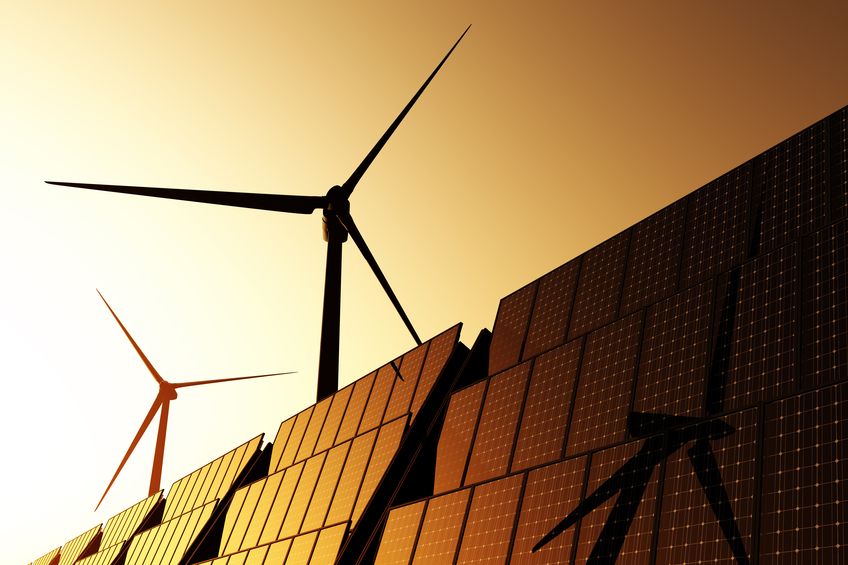Those who believe in the existence of adequate non-fossil alternatives essential to achieve a “carbon-neutral” U.S. — much less global — energy balance anytime soon, or at any cost, are dreadfully misguided.
Nevertheless, there are very understandable reasons why such delusions continue to persist.
One reason behind this facetious fantasy has resulted from massively funded “renewable energy” industry subsidy-seeking propaganda campaigns.
Another is due to great successes of ideological anti-fossil activists in conflating carbon dioxide emissions with “climate pollution,” polar bear perils, and virtually any other “crisis” de jour.
A third, and one that I find particularly disturbing, is because even information sources we should expect to trust, continue to perpetuate a disingenuous and dangerous myth that non-fossil “alternatives” can meet any truly significant U.S. energy needs.
In preparing for this article, I checked data from the U.S. Energy Information Administration (EIA) with a very basic question. I simply wanted to confirm exactly how much U.S. energy is supplied by wind and solar systems.
The stock answer I got back was that we get “11% of our electricity from renewable sources.”
But that wasn’t what I asked.
Rather, I wanted to know how much total energy (always measured in BTUs) comes from wind and solar, respectively, (not just electricity which constitutes only 37 percent of total energy consumption.)
I also hadn’t asked about “renewables,” of which wind and solar are relative bit players within that 11 percent of 37 percent.
Determined digging unearthed some well-buried facts that are important to know about.
First, 80 percent of all U.S. energy comes from fossil sources, with another 8.6 percent contributed by nuclear. Of that remaining “renewable” 11 percent, nearly half (a whopping 45 percent) comes from CO2-emitting biofuels.
While wind reportedly accounts for only 2.4 percent of total U.S. energy, I believe that even this paltry amount exaggeratedly conflates energy payed for through preferential production tax credit subsidies versus energy consumed to meet actual demands.
Having offered this caveat, wind is still credited with providing a relatively piddling 21.3 percent of the 11% total renewable contributions.
In comparison, hydropower — a true renewable and reliable source that environmental activists love to hate, produces, more than wind (25.1 percent) and releases no CO2.
Solar energy is even more anemic than wind, providing 6 percent of renewable sources, less than 1 percent of total U.S. energy.
Wind and solar are not only pitifully puny sources, they are also enormously costly and unreliable.
A dirty little secret is what the wind industry refers to “generating capacities” which are typically nowhere close to the best-case 10-15% average total outputs we might actually expect to get.
Building more will place them in increasingly marginal and worse wind sites.
Intermittent utility-scale wind and solar power won’t ever replace fossil and hydropower. This is because balancing out the power grids on a second-to-second basis requires an equal and reliable amount of spinning reserve power that’s immediately available to kick in when the wind isn’t blowing or clouds cover the Sun.
Most often these spinning reserves are provided by coal or natural gas-fueled turbines operated in the most inefficient way possible. Balancing a grid, requires repeatedly cranking up — throttling down — a turbine; much like driving a car in stop-and-go traffic.
Also consider that constructing a two-megawatt wind turbine requires about 260 tons of steel which, in turn, requires about 300 tons of iron ore processed by about 170 tons of coking coal which is transported by fossil fuel. It will never generate as much energy payback during its short 15-year or less operating lifetime as was invested in building it.
Nevertheless, don’t expect any of these painful realities to be factored into competing liberal green electioneering fantasies.
Leading presidential energy free lunch candidate Joe Biden has proposed a sweeping “Plan for a Clean Energy Revolution and Environmental Justice.”
As sample goals, on his first day in office, Biden will ask Congress to pass an “enforcement mechanism” requiring “clear legally-binding emission reductions” aimed at attaining net zero-carbon emissions by 2050.
As president, Biden will establish “a target of reducing the carbon footprint of U.S. buildings 50 percent by 2035.” The federal government will apply zoning “as a tool to battle climate change” by altering local regulations to eliminate urban sprawl by forcing more people to live closer to public transportation.
A President Biden would ban new oil and gas permitting on public lands and waters, as well as conserve 30 percent of America’s lands and waters by 2030.
Rigorous Biden fuel economy standards will ensure that all future light- and- medium-duty vehicles are electrified, and taxpayers will also finance a half-million charging outlets by the end of 2030.
Be assured that those ubiquitous charging stations — and most particularly the ignorance behind them — would wind up charging the nation and public a whole lot more than we can possibly imagine.
